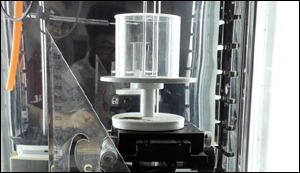Spider silk could be used as robotic muscle
4. 3. 2019 | MIT | www.mit.edu
Spider silk, already known as one of the strongest materials for its weight, turns out to have another unusual property that might lead to new kinds of artificial muscles or robotic actuators, researchers have found.
The resilient fibers, the team discovered, respond very strongly to changes in humidity. Above a certain level of relative humidity in the air, they suddenly contract and twist, exerting enough force to potentially be competitive with other materials being explored as actuators — devices that move to perform some activity such as controlling a valve.

Researchers recently discovered a property of spider silk called supercontraction, in which the slender fibers can suddenly shrink in response to changes in moisture. The new finding is that not only do the threads contract, they also twist at the same time, providing a strong torsional force. The researchers were able to decode the molecular structure of the two main proteins, that make up spider dragline silk. One of these, MaSp2, contains proline, which interacts with water molecules to produce the newly discovered twisting motion.
Read more at MIT
Image Credit: MIT
-jk-




